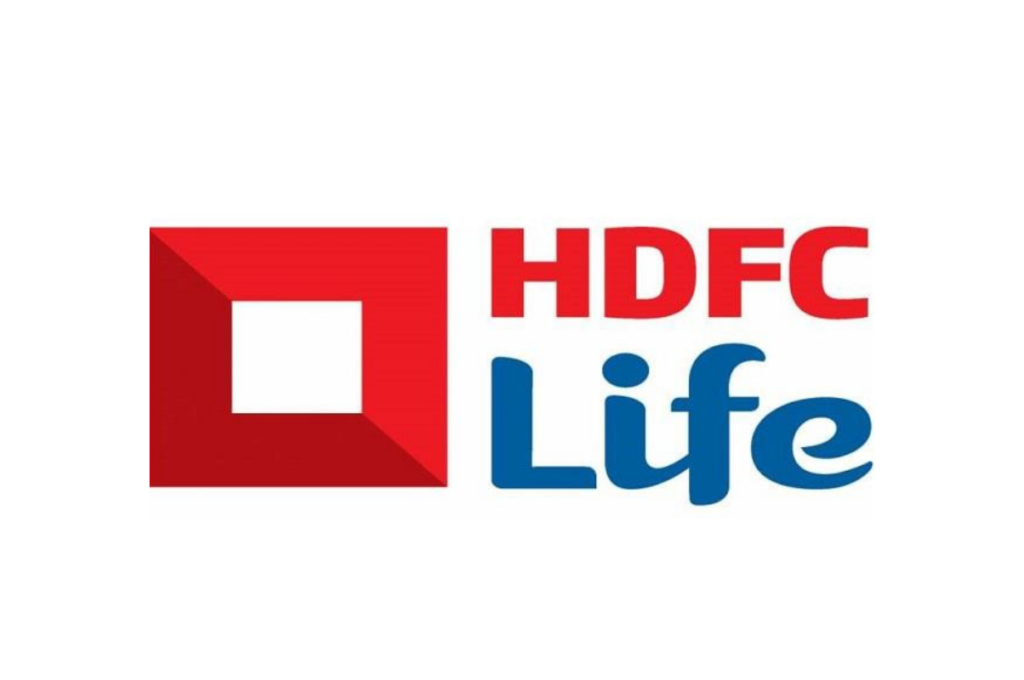(A) Introduction
HDFC Life Insurance Company Ltd incorporated as HDFC Standard Life Insurance in August 2000. The company obtained certificate of Commencement of business in October same year. The company is a Joint Venture between HDFC Ltd and ‘Standard Life Aberdeen Plc’. Standard Life Aberdeen Plc is an investment company with headquarters in Edinburgh and operations around the globe.
The company got its Certificate of Registration from IRDAI on 23 October 2000. It became the first private sector company to obtain registration from IRDAI.
The company offers a plethora of products ranging from protection, savings/ investment, pension and health solutions. From being the first private life insurance company, HDFC Life is now one of the top three private insurers.
The corporate name changed from HDFC Standard Life Insurance to HDFC Life Insurance in January 2019. This was to align the corporate name of the company with its brand name
(B) Major Historic Events
2002:
HDFC Life entered into distribution tie-ups with HDFC Bank.
2003:
HDFC life crossed a milestone of 1 lakh policies and 10,000 individual agents.
2004:
The company launched unit linked products. During the year the company entered into distribution tie-up with Saraswat Co-operative Bank Ltd.
2010:
By the year 2007, HDFC Standard Life crossed the 5 lakh policy milestone. In 2010 HDFC Standard Life’s total assets under management (AUM) crossed Rs 20,000 crore.
2011:
In June 2011, the company established a wholly-owned subsidiary ‘HDFC Pension Management Company Ltd’. The company was established to operate pension fund business under the National Pension Scheme.
2013:
The company turned profitable for FY12 with a profit of Rs. 271 crore and declared its maiden dividend in December 2013.
2016:
HDFC Life’s total premium crossed the Rs 16,000 crore mark. Standard Life Mauritius increased its stake in the company from 26% to 35% by buying 9% shares from Housing Development Finance Corporation (HDFC).
Further, the company established its first foreign subsidiary ‘HDFC International Life & Re Company Ltd’ in UAE in order to operate the reinsurance business.
Also, in August 2016 HDFC Standard Life Insurance & Max Life announced merger of the life insurance business.
2017:
HDFC Standard Life Insurance Company and Max Group entities called off proposed merger of their life insurance businesses. This was due to inability of the parties to obtain the requisite regulatory approvals to consummate the merger.
In November 2017, the company came with an IPO of Rs 8,695 crores which got oversubscribed by 4.89 times. The shares listed on BSE as well as NSE at 7.24% above its Issue price.
2018:
In September 2018, Mr. Amitabh Chaudhary resigned as MD & CEO to join Axis Bank as MD & CEO. Vibha Padalkar elevated as the new MD & CEO from Executive Director & Chief Financial Officer.
2019:
In January, the name of the company changed from ‘HDFC Standard Life Insurance Company Ltd’ to ‘HDFC Life Insurance Company Ltd’.
(C) Shareholding Pattern
At the quarter ended June 2019, the promoters of HDFC Life Insurance held 74.49% shareholding in the company while the public held 25.48% shares. Amongst the Public shareholding, 16.64% of the stake constituted by the institutions whereas the balance stake held by non-institutions. Other than the promoters and the public, the employee benefit trust of the company held 0.03% of the stake in the company. Click to enlarge the image
(D) Shareholders Holding more than 1%


(E) Products Offered by HDFC Life
HDFC Life offers a wide variety of products which can be primarily classified into Life Insurance products and health insurance products. Life Insurance pays the assured amount on the death or maturity of the policy while an Health Insurance covers the medical and surgical expenses of an insured individual.
The Life Insurance business includes ‘Whole life Insurance’ where premium continues until the death of the policy holder & ‘Term life’ where the policy remains in force for a fixed period of time.
As on March 2019, HDFC Life had 38 individual and 11 group products, with 8 rider options available for its customers. During FY19, HDFC Life launched ‘HDFC Life Classic One’ offering joint life cover on second death basis, ‘Click 2 Wealth’ a ULIP based policy that provides incentives to every premium during first 5 years and also return the mortality charges at maturity and ‘HDFC Life Sanchay Plus’ which has multiple options to cater to customers from different walks of life especially for those who wish to secure a guaranteed income for defined period.
(F) Premium Income Breakup of HDFC LifeInsuarnce
The premium earned by HDFC Life can be bifurcated on the basis of the criteria covered below: Click to enlarge the image
(i) On the basis of Broad Product Category
(ii) On the basis of Type of Premium
The premium received by a company can be classified into First year premium, Renewal premium and Single premium. First year and single premium together denote the value of new business whereas Renewal premium denotes revenue from existing business.
In FY19, HDFC Life earned 17% of its total premium income from the Ist year premiums and 49% from renewal premiums. Further, 34% contribution from the Single premium policies. Click to enlarge the image
The insurance business of the company is limited to the territory of India all the premiums earned were from India. Hence, no premium income is earned by the company from outside India.
(G) Commission Paid
The commission expense for HDFC Life can be bifurcated on the following basis:
(i) On the basis of Category of Business
The company pays commission to the agents on the business brought by the agents to the company. The agent earns commission on not only the first premium but on every renewal premium paid by the client.
In FY 19, 70% of the commission paid to the agents on Ist year premium, 19% on the renewal premium and 11% on the single premium. Click to enlarge the image

*As a % of total commission paid
(ii) On the basis of Distribution
The distributors of HDFC Life include Brokers, Corporate Agencies and Others which include Common Service Centres, Insurance marketing firms and Micro finance companies. Click to enlarge the image
(H) Product Mix of HDFC Life Insuarnce
The company has a balanced product portfolio with Participating, Non-Participating & ULIP’s as the major type of products offered. While ULIP is a lower margin business. But it remains the most attractive business proposition for the Bancassurance. This is because it does not expose the company to the volatility in interest rates. Over the years, HDFC Life has taken important steps in order to reduce ULIPs and shift more towards other margin accretive products.
ULIP’s contribution in the product mix has been reduced from 82% in FY11 to 55% in FY19, thus, giving more emphasis to traditional as well as protection business.
Change in product mix of the company over last 3 years is given below: Click to enlarge the image

*On the basis of New Business Premium received
The Savings policies include ULIP, participating, Non-Participating and Group Savings which contributed 56% towards the new business premium of HDFC Life in FY19. The company has been able to enhance new business from protection policies which include Term & Annuity to 44% during FY19.
(I) Geographies Covered
The standalone entity HDFC Life Insurance primarily has its operations in India along with its subsidiary HDFC Pension Management. But the company’s other subsidiary ‘HDFC International Life & Re Company’ offers reinsurances in UAE, Oman, Jordan, Bahrain & Egypt. The company is working on expanding its footprints across the entire Gulf region as well as in MENA (Middle East & North Africa) regions.
(J) Subsidiaries of HDFC Life Insurance
HDFC Life through its subsidiary ‘HDFC Pension Management Company’ manages pension business in India while its subsidiary company ‘HDFC International Life & Re Company’ operates reinsurance business in UAE, Oman, Bahrain, Jordan & Egypt.
HDFC Pension Management company started its operations in FY14. Within a period of 5 years the company has grown leaps & bounds with 3.6 lac customers and AUM of Rs 5,165 crore in FY19. The assets under management for HDFC Pension have grown from Rs 0.1 billion in March 2014 to Rs 51.7 billion in March 2019 growing at a CAGR of around 250% in 5 years.
(K) Assets Under Management
HDFC Life Insurance has been able to increase its assets under management steadily. In FY19 the AUM of the company increased by around 18% to Rs 1256 billion from Rs 1066 billion in FY18. The mix of the AUM of HDFC Life in FY19 was 62% towards Debt and 38% towards equity. Click to enlarge the image
(L) Distribution Channel
The company has extensive reach over different parts of India given its well diversified distribution mix. HDFC Life has 412 offices in India and apart from these, also has benefit from the branch network of its bancassurance partners and partners from the non-traditional business which gives a huge boost to the company’s revenues. Click to enlarge the image
The products of the company are largely offered through four distribution channels which comprises of Bancassurance partners, Individual Agents, Direct and Brokers. As on 31 March 2019 HDFC life had a network of 220+ partners and details of such partners is mentioned in the table below:
The company sources maximum premium from the Bancassurance segment which earlier contributed over 70% of the premium share, but the company’s focus on direct segment has led to a reduction in the contribution of Bancassurance to 64% in FY19. The brokers and others contributed 4% to the premium while Agency contributed 13% and Direct contributed 19% to the premium.
A graphical description of the changing share of distribution channel is illustrated below: Click to enlarge the image

(M) Market Share
HDFC Life is among the top 3 private life insurance companies in India. The company continues to consolidate its stronghold across various segments of policies issued in a year, the details of the same have been given in the table below: Click to enlarge the image
(N) Solvency Ratio
The solvency ratio is a key metric used to measure an enterprise’s ability to meet its debt obligations and is used often by prospective business lenders. The solvency ratio indicates whether a company’s cash flow is sufficient to meet its short-and long-term liabilities.
IRDAI being the regulatory body governing the Insurance industry requires the insurance companies to maintain minimum solvency ratio of 150% in order to avoid chances of bankruptcy. HDFC Life Insurance’s solvency ratio fell from 192% in FY18 to 188% in FY19 which again rose to 193% at the quarter ended 30 June 2019. Click to enlarge the image

(O) Persistency
Persistency ratio is an important metric to track as persistency is a key driver of profitability for an insurer. In insurance parlance, policy retention is known as “persistency” and “persistency ratio” measures how long customers stay with their policies. Persistency ratio that’s disclosed by the insurance companies measures the number of policies (both by count and premium) that continue in its books by the end of the first year (13th month persistency), second year (25th month persistency), third year (37th month persistency), fourth year (49th month persistency) and fifth year (61st month persistency).
HDFC Life initiated its efforts of realising the customers the need to invest and the benefits of staying invested with a policy. Moreover, the company’s efforts on handholding its 13th month persistency very carefully has in FY19 led to an improvement in the 49th month persistency levels from 62% last year to 68% in March 2019.
In FY19, the 13th month persistency levels of the company have been safely maintained at 87%, the 25th month persistency of the company has shown an improvement over the previous year with persistency improving from 77% to 80%. Similarly there have been an improvement in the persistency levels on policies down the line, the data for which has been illustrated in the graph below: Click to enlarge the image
(P) New Business Margin
The New Business Margin of the company has been growing steadily with the company being able to add over 100 bps year on year towards its margin. In FY19 HDFC Life secured industry leading new business margins of 24.6% on the business it underwrote. The margins grew from 23.2% in FY18 to 24.6% in FY19. Click to enlarge the image
(Q) Corporate Actions
Since listing, HDFC Life has paid dividend twice. Apart from the payment of dividend, the company has not entered into any type of corporate actions like split of shares, bonus, rights-issue. After listing the promoters of the company offered for sale their shares in the company, in order to increase the public holding to minimum 25%, the details of the same have been mentioned below:
March 2019- Standard Life Mauritius Holding offered for sale up to 7,00,00,000 equity shares representing 3.47% of the stake. The offer for sale also had a green shoe option of 2,95,00,000 equity shares representing 1.46% of the stake. The offer for sale was made at a floor price of Rs 357.5 per share.
May 2019- Standard Life Mauritius Holding offered for sale up to 3,60,00,000 equity shares representing 1.78% stake in the company. The shares were offered at a floor price of Rs 390 per share.
(R) Opportunities and Risk/Concerns
(i) Opportunities
Favourable Demographics
With the majority of population of India being of working age, opens up a vast array of opportunities for the insurance companies. With a rising number of professionals, growing nuclear families and the ever-lasting need to secure the future of the family shall push more and more people towards Insurance business.
Plethora of Products
HDFC life offers a wide range of product beside the traditional products, the company also offers products in the saving and protection category as well as Health Insurance. Furthermore the company has a knack into product innovation and has launched many breakthrough products , which eventually will improve the product mix of the company.
Technology Backing
HDFC Life as a company is very tech savy and makes use of technology in not only reaching the final customers, but also uses it to monitor the performance of its channels and identify gaps or the need of training wherever necessary. The company makes use of Data Anlaytics in order to identify the trends in the consumer behaviour with which it decides on the need of getting its business reinsured. Going forward, with the improvement in the digital age of the people in general, company expects to launch even more insurance policies online.
Strong Distribution Channel
With more and more distribution channels being lined up, HDFC Life is taking strong steps to diversify its distribution channel from Bancassurance to other channels. In FY 19 the company has added many new age distributors like Paytm who can constructively add to the business of the company.
Lack of formal retirement provision
A large portion of the population in India remains out of the coverage of a formal retirement provision. Thus, exposing them to a future without any financial security leading to dependence on the children and the government at large.
Huge Protection Gap
Protection Gap is the difference between the resources needed and resources already available for the dependents to maintain their standard of living in the event of untimely death of the earning member of the family. As per Swiss Re, the protection gap for India is nearly USD 8.56 trillion. Not only the protection gap but Protection ratio which is the ratio between protection gap and protection needs is also very high for India at 92% while for countries like Japan it is 56%, South Korea 85% etc.
(ii) Risks/Concerns
Customer Motivation & Retention
The main challenge of insurance as an industry remains towards attracting a customer, motivating him to buy the product and most importantly retaining the customer. Retaining customer becomes all the more relevant because more customer turnover causes an increase in the operating expenses which impact the company’s performance metrics like persistency ratio, expense ratio and profitability.
Investment Risk
With large exposure to savings product both linked and unlinked, the company has the responsibility of not only ensuring safety of the capital but also appropriate return on the capital. An inability of the company to mitigate the investment risk can add burden on its new premium business, thus, negatively impacting the margins.
Meeting the regulatory requirement
Insurance industry in India is governed by IRDAI who is the watchdog for insurance companies. Companies need to follow the guidelines of the regulator like maintaining minimum solvency ratio, ensuring the quick disbursal of claims etc. In case the company is unable to meet such criteria’s it faces penalties from the regulator which tarnishes the image of the company.
Mortality & Morbidity risk
Mortality risk is the risk that the insurance company will have to bear financially in case most of its life insurance policyholders die before their expected lifespans. Morbidity Risk refers to the frequency with which diseases appear in the population. In order to avoid financial crisis arising out of mortality and morbidity, ICICI Prudential diversifies its products.
Open Architecture in Distribution
With government allowing open architecture in Bancasssurance, now the banks would be allowed to sell product of 3 life insurers, general insurers and health insurers each. With this, the banks would now have an upper hand in demanding more commissions from the Insurance companies.

To know about our investment advisory services and to place your enquiries: Drop us a mail at – info@pawealth.in or Visit pawealth.in

References: Annual Reports, News Publications, Corporate Announcements, Management Discussions, Analyst Meets & Management Interviews.
Disclaimer: The report only represents personal opinions and views of the author. No part of the report should be considered as recommendation for buying/selling any stock. The report & references mentioned are only for the information of the readers about the industry stated.














Hi, great work. How about a report on icici Lombard as they are single largest Pvt. player in that segment